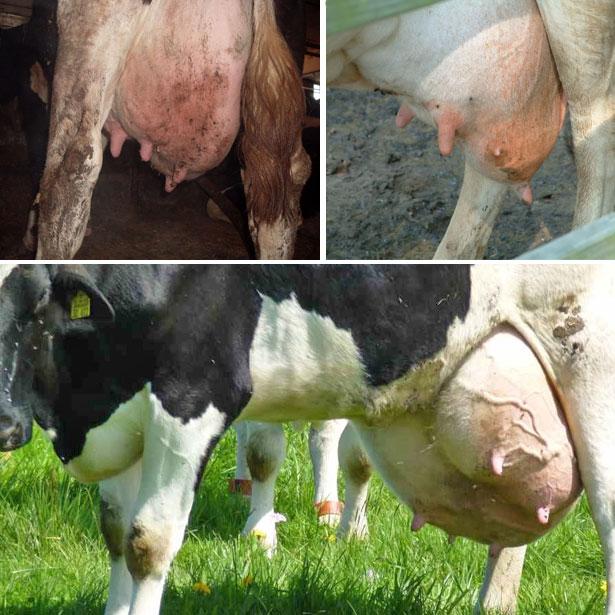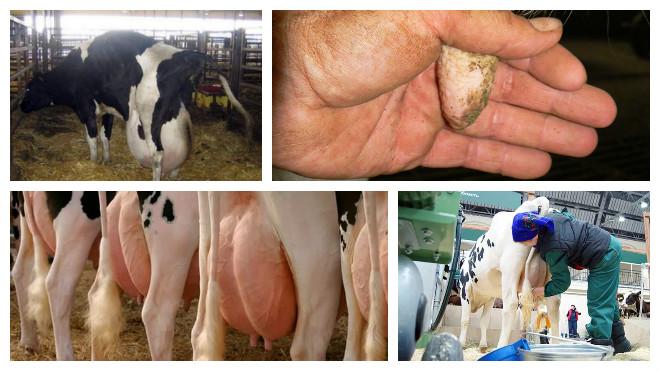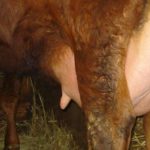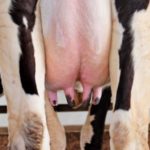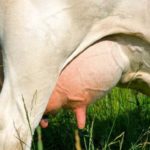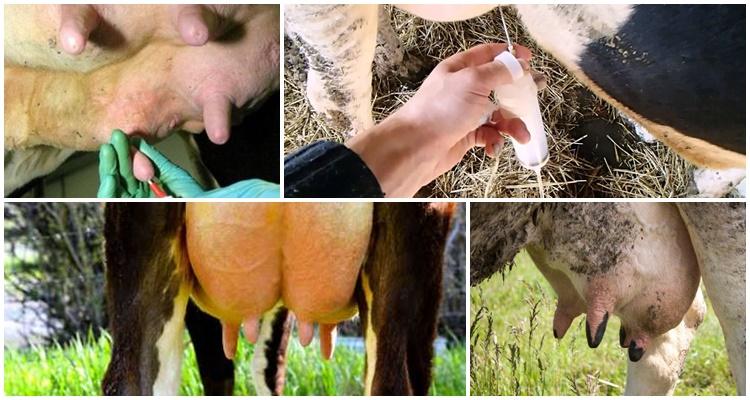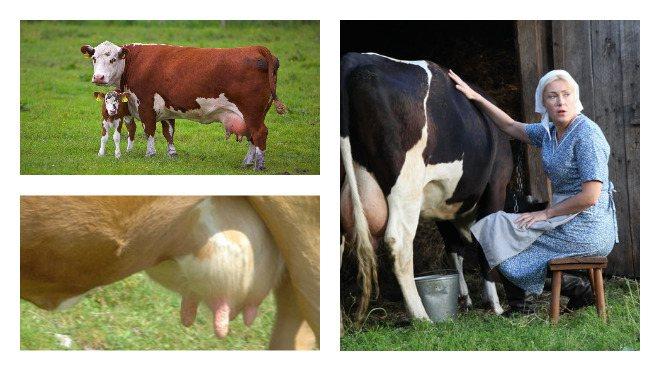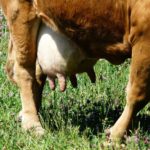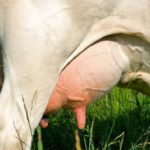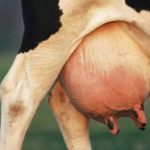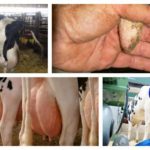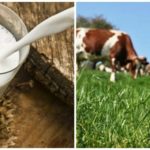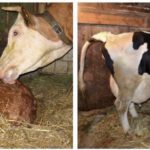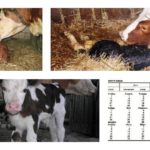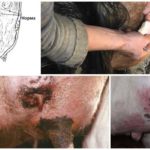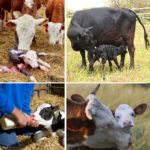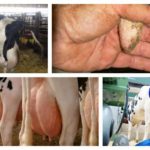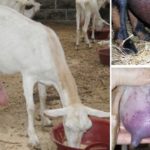The udder in cows is one of the most sensitive and important organs, the condition of which can indicate the health or unhealth of the animal. Udder edema in a cow after calving or before it is called swelling of the mammary gland, which is dangerous due to the appearance of mastitis, deterioration in the quality of milk and a decrease in milk yield. If characteristic symptoms occur, you should seek medical help.
Causes
The main reasons for the development of the disease are as follows:
- Udder injury.
- Pathologies of the kidneys, heart muscle, blood vessels (if the udder is swollen long before calving).
- Lack of physical activity.
- Incorrectly formulated diet (lack of coarse fiber, excess protein and succulent feed, as well as excess magnesium, potassium and salts in food).
- Mycotoxicosis (fungal diseases).
- Hormonal disorders.
- Serous edema of the udder. Develops against the background of impaired lymph or blood flow during pregnancy and after calving.
Symptoms and signs
Signs of a hard udder in a cow before or after giving birth are:
- Swelling of individual areas of the udder (right, left half, back) or the entire organ. The painful condition extends not only within the gland, but also to the surrounding tissues.
- Nipples become shorter.
- The skin is rough, shiny, with a bluish tint. When you press on the udder, a depression is formed that does not disappear for a long time (the organ looks like dough).
- Hematomas, abrasions (if the cause of the pathology is trauma).
- Increase in udder size.
- Skin tension.
- Watery milk.
- There is no pain on palpation.
- Organ deformation.
- Tissue compaction with advanced serous edema.
- The cow gives little milk.
The disease may subside temporarily and then reappear, but in other areas of the mammary gland.
What complications and consequences may there be?
Often, swelling occurs before childbirth, but goes away on its own in the first days of lactation. Veterinarians still recommend monitoring the animal’s condition, since the illness (even short-term) increases the organ’s susceptibility to the effects of pathogenic microorganisms.
Another dangerous consequence is organ induration, in which the gland becomes hard. The cow produces little milk and has to be culled.Mastitis can become chronic, the signs of which are the proliferation of tissues and their compaction. The size of the udder also increases and the milk supply decreases. There is no point in waiting for mastitis to go away on its own. The animal requires urgent veterinary care.
Treatment methods for udder swelling
There are three main methods of therapy to completely eliminate breast swelling:
- creating the right diet;
- massage and other physiotherapy;
- use of medicines.
Diet therapy
Pathology can be treated with a properly selected diet. Juicy feed that promotes milk production is removed from the menu of a sick cow. Also reduce the amount of table salt, concentrates and protein supplements.
Instead of the above, cereal hay is left. In this case, the animal is kept on individual feeding. Most of the time the cow is tied. Short walks are allowed, but going out to pasture as part of a common herd is completely excluded.
Physiotherapy
To restore blood and lymph flow, a sick cow needs to have an udder massage. The direction of movement is from the nipples to the base of the gland. For convenience, the drooping udder should be secured with a special bandage.
Medications
This method is resorted to if the first two are ineffective. Therapy includes the use of ointments and intravenous solutions. Infusion treatment reduces the manifestation of allergies and increases blood clotting.Heart medications, namely caffeine, are also used. By stimulating cardiac activity, blood flow increases, which helps remove fluid from the mammary gland. Veterinarians advise smearing the problem area of the udder with Rigefen. Therapy continues for 1-4 days until the inflammation disappears. Bismuth-zinc ointment, ichthyol and Vishnevsky have the same effect. However, the last two drugs somewhat spoil the taste of milk.
Folk remedies and recipes
Homemade remedies are allowed if approved by a veterinarian. Self-treatment of an edematous udder is fraught with the development of complications. Traditional methods are effective in the first stages of the disease and only in combination with drug therapy. Such remedies help to achieve a positive effect faster. To relieve udder swelling, you can use diuretic infusions and decoctions:
- dill decoction (in advanced cases);
- from birch buds, juniper berries, horsetail;
- infusion of dill or fennel (pour a bucket of boiling water and drink 1-2 buckets per day for 3 days).
No less effective are ointments and lotions that are applied to the inflamed udder. To prepare home remedies you will need:
- Rice starch. The product is diluted in water until a thick consistency is obtained and spread on cheesecloth. Next, the compress is applied to the sore spot and kept for 3-5 hours.
- Milk, butter, rye flour. A cake is made from these components and applied to the udder for a couple of hours.
- Vegetable oil, paraffin or beeswax. The ingredients are mixed in a water bath, cooled and lubricated on the affected area.
- Potato starch, vegetable oil. The products are mixed and a cream is obtained.
Are there preventive measures?
Preventive measures for the development of udder edema are proper care. In particular, this rule concerns the quality of the animal’s nutrition. Cows need to be regularly taken out to pasture to prevent stagnation of lymph and blood in the body.
The most important preventive measure that will allow you to avoid udder swelling is the preparation of a suitable diet during the dry period.
This point requires special attention in the three-week period before and after calving: food should consist of only hay, and succulent herbs and concentrates are removed from the animal’s menu. In addition, the frequency of milking is reduced. Three weeks before giving birth, the cow's menu includes protein supplements, silage and concentrates to prepare the body for feeding.
It is important that the feed is of very high quality. It is necessary to regularly test food for the presence of mycotoxins and process grains by flattening or extruding. Changing the diet after childbirth is carried out gradually, since the body has not yet recovered from childbirth.
To prevent the development of udder edema, it is necessary to follow the rules of hygiene and sanitary requirements when performing the following manipulations:
- childbirth;
- milking;
- surgical intervention;
- a haircut;
- other events of this kind.
If symptoms of udder swelling are detected, it is necessary to show the animal to a veterinarian. There is no point in treating yourself. The main method of therapy is diet correction.

